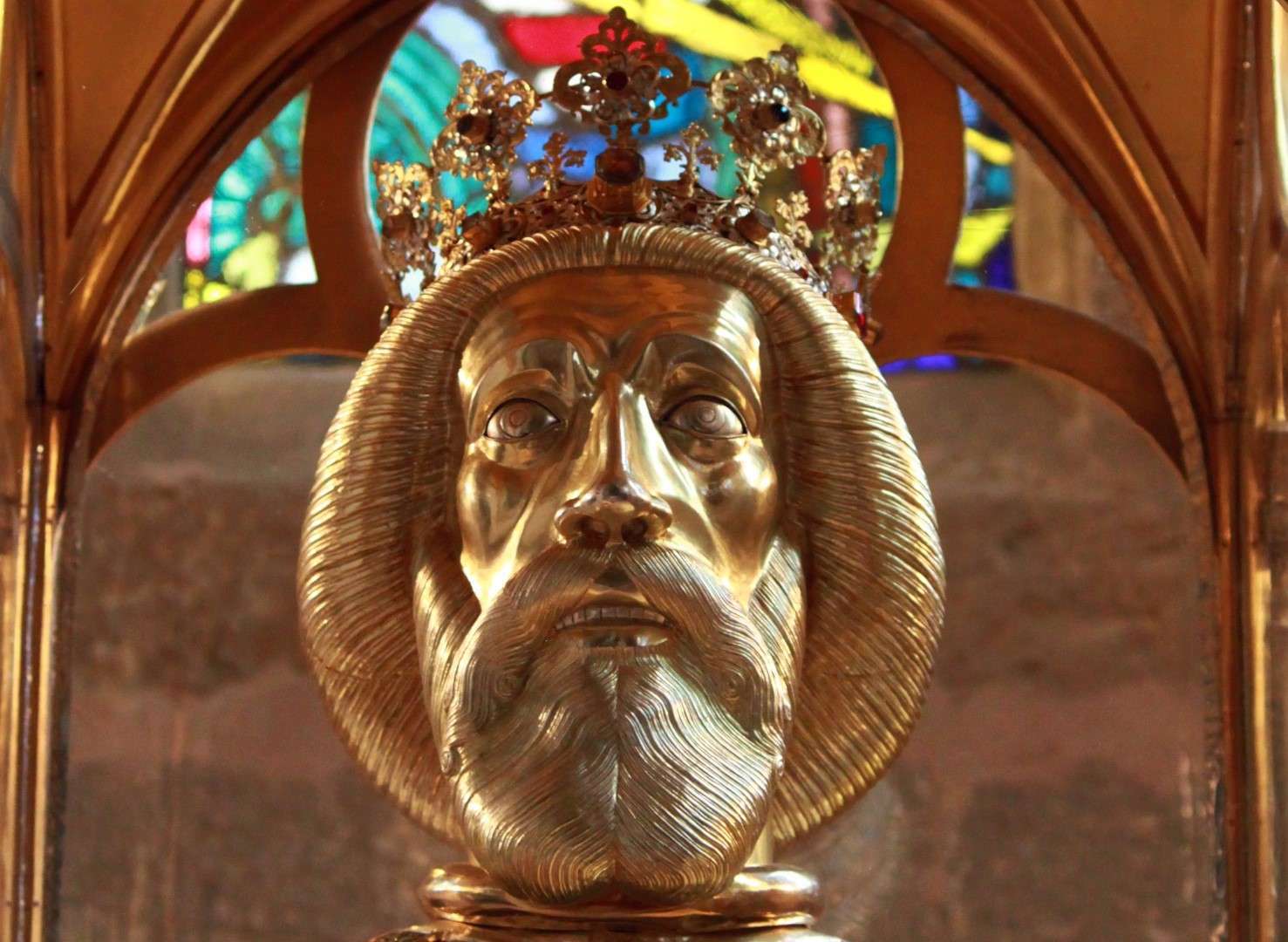Saint Ladislaus (1077 – 1095) was King of Hungary, known for his fearless heroic deeds as well as for the conquest of Croatia in 1091. The legends about him depict the Knight King as an ideal of late-medieval Hungarian chivalry. According to the most popular legend about Saint Ladislaus, he risked his life to rescue a Hungarian peasant girl who kidnapped by a Cuman warrior (a member of a Turkic nomadic tribe that later settled in Hungary). Citing this legend, numerous chronicles praise him for his bravery and dedication to stand up for all his subjects, regardless of their social status. According to chronicles, the Knight King had an outstanding physique and was exceptionally tall in medieval terms. The legends usually equip him with quasi-supernatural powers, while the depictions of his victory over the Cuman is elevated to symbolise Christianity’s triumph over pagans. On the basis of the legends which preserved his memory for the generations to come, Saint Ladislaus was canonised a century after his death in 1192 by Pope Celestine III.
After his death in 1095, Saint Ladislaus was buried in the city of Nagyvárad (today, Oradea in Romania). After he was canonised a century later, his grave was opened for a reburial, and his head was separated from the rest of the body and turned into a relic. The head was put in a wooden reliquary that was used during masses. The reliquary, however, was destroyed in a fire in 1406. The accident happened during the reign of Sigismund of Luxembourg (1387–1437), who then decided to have the reliquary remade in a more prestigious form. Part of the skull was covered in silver, and it was placed in a herm (a head reliquary). Today, the Herm of Saint Ladislaus is recognised as the most valuable piece of Hungarian metalsmithing. The head of the herm—which contains pieces of the skull—is made of gilded, embossed silver. The shoulder and chest were made using a special wire enamel technique, that originated from Byzantium. The herm is likely to be a portrait of Béla III as Ladislaus was canonised under his rein. Since the 15th century the herm has been kept in the city of Győr.
In modern days doubts were raised about the authenticity of the relics within the herm. Many argued that the pieces of the skull do not belong to the heroic Hungarian king, but to someone else. While earlier research could date the body to be from the 11th century when Ladislaus lived, and the age of the male skull also seemed to correspond with Ladislaus’ age when he died, the identity of the skull was not certain until last year. To determine the origin of the bones, in 2021 the Institute of Hungarian Research was invited to do a DNA test on a piece of the skull—since another member of the Árpád dynasty (Béla III) was identified earlier, by comparing the skull remains with Béla’s DNA, modern technology made it possible to tell for certain whether the herm indeed includes pieces of the Knight King’s body. Last year, the researchers established that the bones do belong to Saint Ladislaus beyond any doubt, debunking an earlier theory that in the 15th century when the herm was damaged in the fire the pieces of the skull were replaced with new ones.
With the remains of Saint Ladislaus identified, scientists have another DNA sequence that they can now use to discover new members of the House of Árpád—which is one of the primary goals of the Institute of Hungarian Research that was established in 2019 by the Hungarian government and the Ministry of Human Capacities. Now the Institute’s new research is focusing on an ossuary in Székesfehérvár where around 900 people were buried between the 9th and 16th centuries and some of the skeletons are suspected to have belonged to members of the royal dynasty. With the help of the discovery proving the authenticity of the skull in the herm of Saint Ladislaus, the goal of uncovering new members of the Árpád royal dynasty is now no longer a mission impossible.








